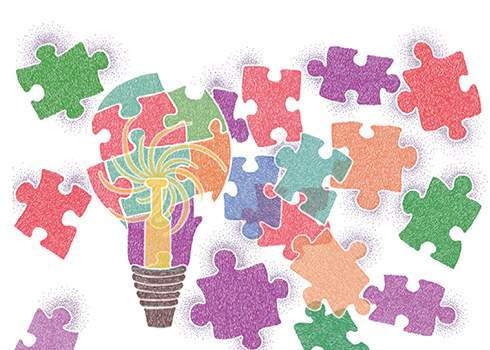In Mindful’s February issue, columnist Sharon Begley looks at the ways neuroscientists and psychologists are working to understand creativity better. Begley writes about how new research from neuroscientist Nancy Andreasen of the University of Iowa refutes some of our long-held conceptions about creativity and the brain. Here are three:
The right brain innovates and the left brain calculates. What science used to conclude is that it’s the stimulation of the right side of the brain—perhaps with brainstorming exercises (get your flip-charts, markers, and games out, people)—and then the left brain decodes it all and comes up with a strategy to apply or make real the idea that blossomed in the right brain. Scientists are now saying that the left and right hemispheres of the brain are both equally involved in creative tasks.
High IQ means greater capability for invention. Intelligence is necessary, but having the analytical skills and rigorous attention that is sometimes attributed to a high IQ isn’t sufficient. Andreasen’s research shows that new ideas are formed through flashes of insight, not analytical thinking. While a high IQ can help the creative process along, it’s the ability to combine and recombine disparate facts and thoughts that lead to new ideas, “allowing thoughts to leak out of their tight containers and collide in interesting ways,” Begley writes in the February issue.
There is a special creativity hot spot in the brain. Today’s scientific understanding posits that the parts of the brain involved in everyday thinking, planning, and understanding all contribute to coming up with original ideas. It’s not about stimulating hot spots in the brain but allowing time for thoughts and ideas to mix and collide. The more mental building blocks the brain can sustain, assemble, and reassemble, the better the chances are of cultivating those “flashes of insight,” Andreasen’s studies suggest.
For more than just this Glimpse:
- See the full table of contents for Mindful‘s February 2014 issue.






